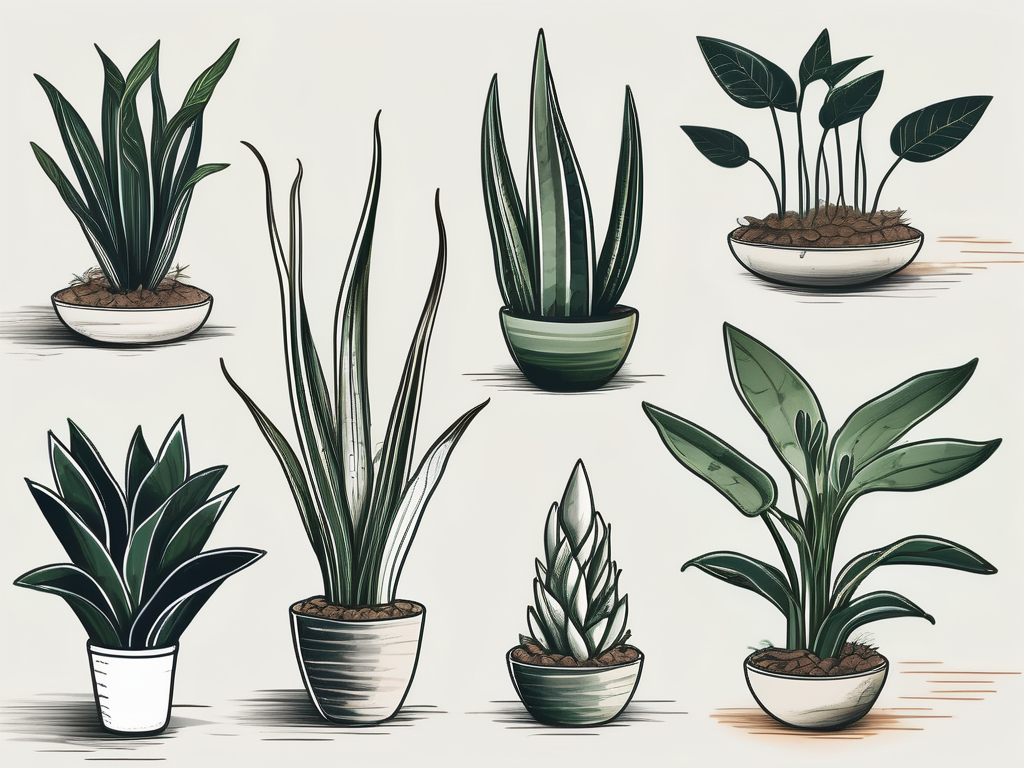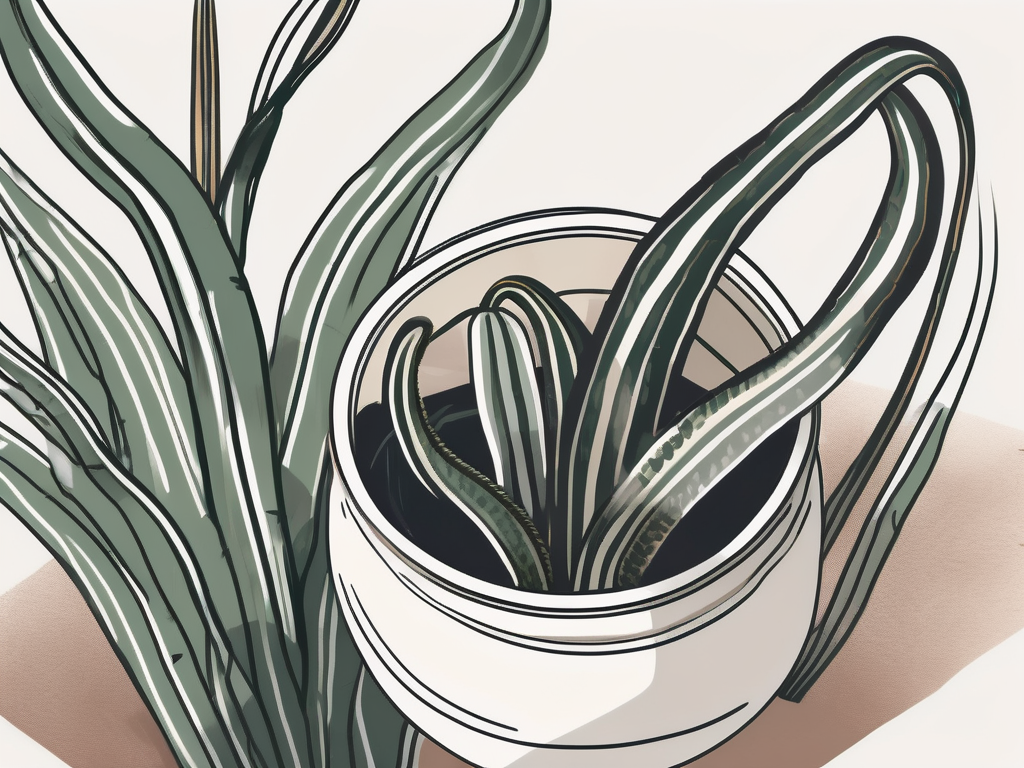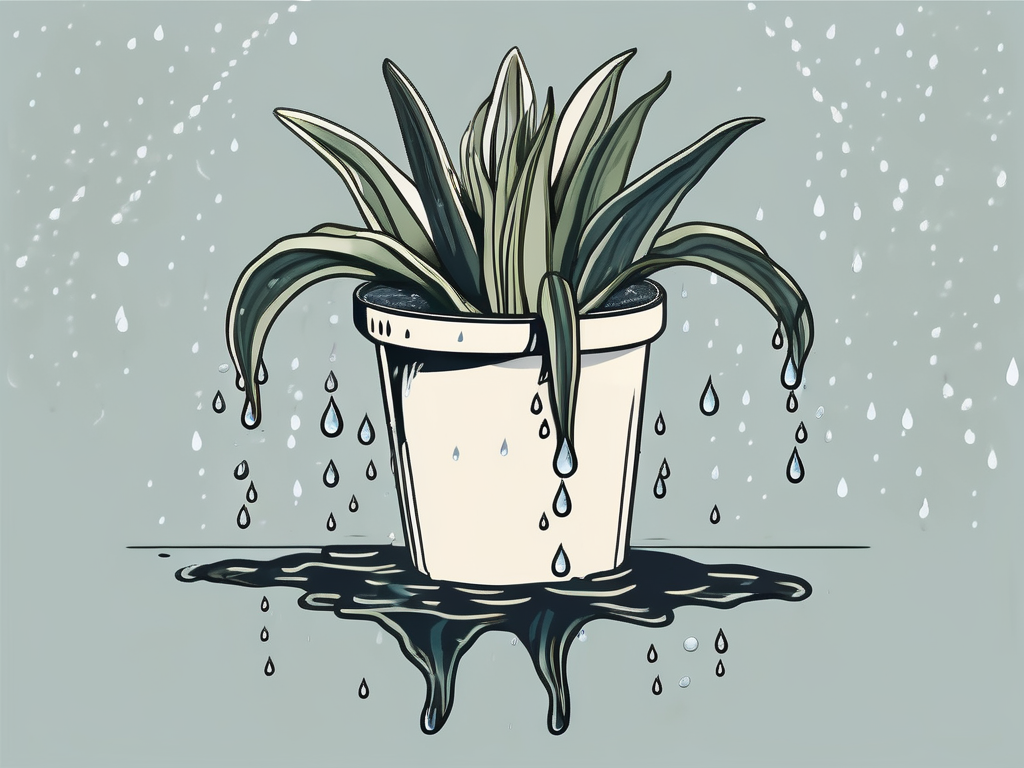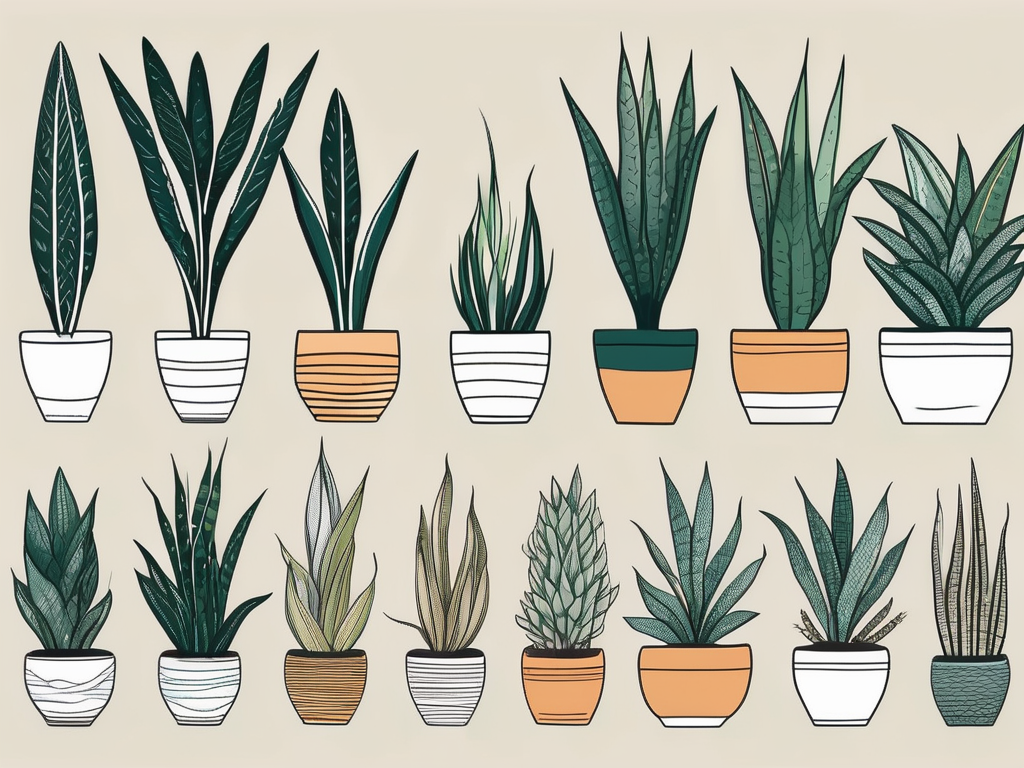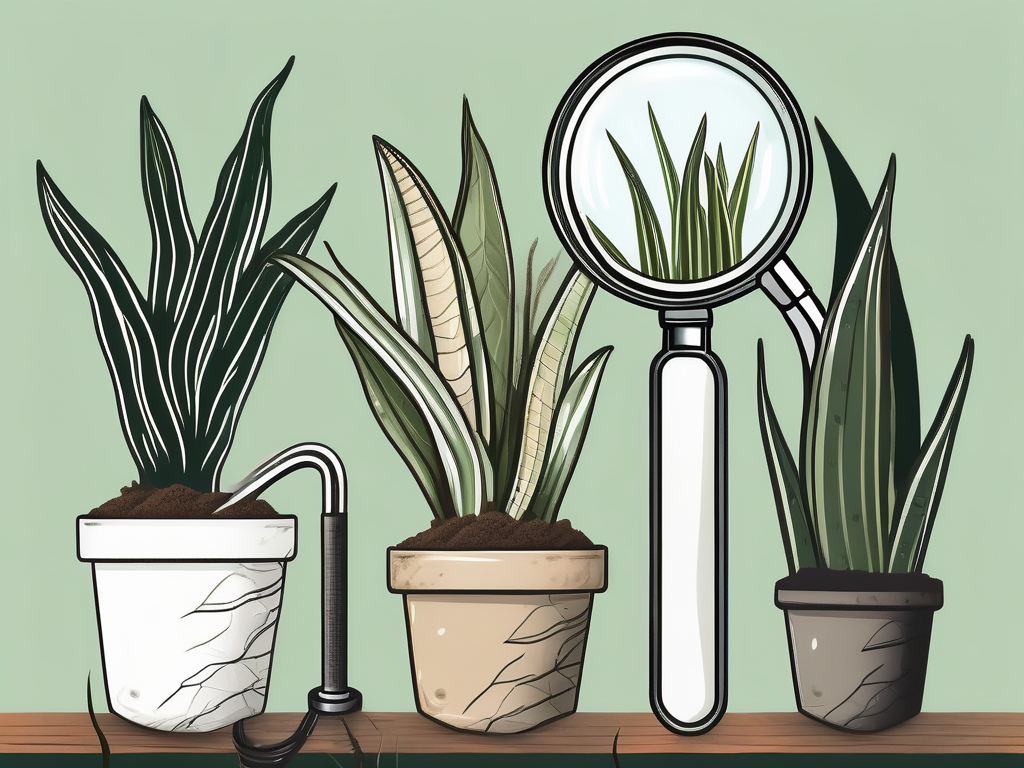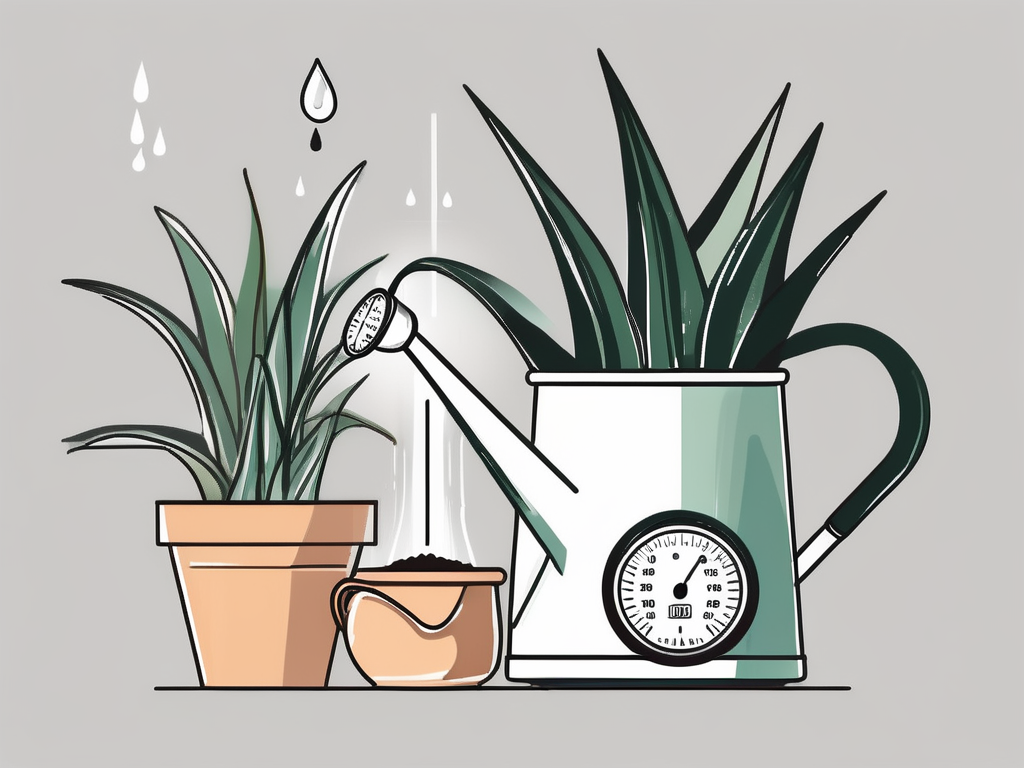
Snake plants, with their tall, striking leaves and minimal care requirements, have become a beloved fixture in homes across the globe. Yet, while many admire the above-ground beauty of these plants, the real magic lies beneath the surface. The roots of the snake plant hold fascinating secrets that can influence not only how your plant looks but how it thrives.
In this article, we'll unravel the mysteries of snake plant roots. From understanding their unique characteristics to offering tips on root health, we'll guide you through everything you need to know. Whether you're a seasoned plant parent or just beginning your journey, there's something here for everyone.
Understanding Snake Plant Roots
Before we get into the care specifics, it's crucial to understand what makes snake plant roots so unique. Snake plants, also known as Sansevieria or Dracaena trifasciata, have a root system that differs from many other houseplants. Instead of a sprawling network, snake plant roots are more compact and fibrous. They tend to grow in a tight cluster that supports the plant in drawing water and nutrients efficiently.
Interestingly, these roots are quite resilient, which is part of why snake plants are so hardy. They can withstand a range of conditions, from drought to varying soil types. However, this doesn't mean they're invincible. Like any plant, snake plants need the right environment to keep their roots healthy.
A key feature of snake plant roots is their ability to store water. This adaptation allows the plant to survive in its native habitat of West Africa, where water might not always be readily available. Understanding this feature can help you mimic these conditions at home, ensuring your plant remains healthy and vibrant.
Choosing the Right Soil
When it comes to soil, snake plants aren't particularly fussy, but they do have a preference. The best soil for snake plants is well-draining, which helps prevent one of their biggest enemies: root rot. Root rot can occur when the roots sit in water for too long, leading to decay and, ultimately, a very unhappy plant.
A cactus or succulent potting mix is often a good choice for snake plants. These mixes are designed to drain quickly, reducing the risk of waterlogging. Alternatively, you can create your own mix by combining regular potting soil with sand or perlite to improve drainage.
Here are some tips for selecting or making the perfect soil:
- Good drainage: Ensure the soil allows water to pass through quickly.
- Balance: A mix of potting soil with sand or perlite can provide the right texture.
- Avoid heavy soils: Steer clear of soil that's dense or clay-heavy, as it retains too much moisture.
Choosing the right soil is a simple step that can make a big difference in your snake plant's health and longevity.
Potting and Repotting Snake Plants
Potting and repotting are crucial aspects of maintaining healthy snake plant roots. When selecting a pot, size and material are key considerations. Snake plants prefer being a bit root-bound, so you don't need a pot that's too large. A snug fit encourages the plant to focus on growing leaves rather than overextending its roots.
As for material, a pot with good drainage is essential. Terra cotta pots are a popular choice because they allow excess moisture to evaporate, reducing the risk of root rot. Make sure your pot has at least one drainage hole at the bottom.
Repotting is generally only necessary every 2-3 years. Here's a simple guide to repotting your snake plant:
- Prepare the new pot: Add a layer of fresh, well-draining soil.
- Remove the plant: Gently take your snake plant out of its current pot, being careful not to damage the roots.
- Inspect the roots: Check for any signs of rot or damage. Trim any unhealthy roots with sterilized scissors.
- Place in new pot: Position the plant in the center of the new pot and fill around it with soil.
- Water lightly: Give your plant a gentle watering, allowing any excess to drain away.
Repotting might seem daunting, but it's a rewarding process that ensures your snake plant's roots have the space and nutrients they need to thrive.
Watering Wisely
Watering is a crucial part of plant care, and snake plants are no exception. However, their root structure and water storage capability mean they don't need frequent watering. Overwatering is a common mistake that can lead to root rot.
A good rule of thumb is to let the soil dry out completely between waterings. Depending on your home's conditions, this might mean watering every 2-6 weeks. During the winter months, when the plant is in a dormant phase, you can water even less frequently.
To check if your snake plant needs water, stick your finger into the soil about an inch deep. If it feels dry, it's time to water. When you do water, make sure to do so thoroughly, allowing water to reach the roots and drain out of the pot. This ensures the roots get what they need without sitting in excess water.
Remember, it's easier to recover from underwatering than overwatering, especially with snake plants. When in doubt, err on the side of less water.
Signs of Root Problems
Even with the best care, sometimes roots can encounter problems. It's essential to recognize the signs early so you can take action to save your plant. Here are some common indicators of root issues:
- Yellowing leaves: While this can result from several factors, it's often a sign of overwatering and root rot.
- Soft or mushy leaves: This is another symptom of too much water and potential root damage.
- Unpleasant odor: A foul smell from the soil or roots can indicate decay.
- Stunted growth: If your plant isn't growing as expected, it might be struggling with root health.
If you notice any of these signs, it's essential to inspect the roots. Remove the plant from its pot and check for soft, brown, or mushy roots. If you find any, trim them away with sterilized scissors and repot the plant in fresh, well-draining soil.
Encouraging Healthy Root Growth
Promoting robust root growth will lead to a healthier snake plant overall. Here are some tips to encourage your plant's roots to flourish:
- Proper watering: As mentioned earlier, letting the soil dry out between waterings is vital.
- Right soil mix: Ensuring your plant is in well-draining soil supports healthy roots.
- Adequate light: Snake plants prefer indirect but bright light. Proper lighting supports photosynthesis, which in turn, feeds the roots.
- Fertilizing sparingly: While snake plants don't need much fertilizer, a light feed in the growing season can provide nutrients to support root health. Use a balanced houseplant fertilizer, diluted to half strength, once or twice during spring and summer.
Creating the right environment for your snake plant will help its roots develop strong and healthy, which, in turn, will support a thriving plant above ground.
Pests and Fungal Issues
While snake plants are hardy, they're not immune to pests and fungal problems that can affect the roots. Common pests like spider mites and mealybugs can disrupt the plant's health, while fungal issues often stem from overwatering.
To keep pests at bay, regularly inspect your plant for signs of infestation. Look for webs or white cottony spots on the leaves. If you spot any, treat them promptly with insecticidal soap or neem oil.
Fungal issues, on the other hand, can often be prevented by ensuring proper watering and good airflow around the plant. If you suspect a fungal problem, you might notice moldy patches on the soil or plant base. In such cases, remove any affected parts and repot the plant in fresh soil.
Maintaining a clean environment and following good watering practices are your best defenses against these issues.
Integrating Snake Plants into Your Space
Beyond their care, snake plants are a fantastic addition to any interior space. Their architectural lines and striking appearance can complement various decor styles, from modern to bohemian.
Consider these ideas for incorporating snake plants into your home:
- Statement piece: Use a large snake plant as a focal point in a room. Its tall, upright growth can add height and interest.
- Cluster with other plants: Group snake plants with other houseplants for a lush, green display.
- On shelves: Smaller snake plants work well on shelves or mantels, adding a touch of greenery without taking up much space.
- Office desk: Their low maintenance makes snake plants ideal for office spaces, where they can improve air quality while requiring minimal care.
With their versatility and aesthetic appeal, snake plants can enhance any area of your home, providing both beauty and a sense of calm.
Final Thoughts
Snake plant roots are a vital part of what makes these plants so easy to care for and beloved by many. By understanding their needs and quirks, you can ensure your snake plant thrives, adding beauty and greenery to your space.
At Cafe Planta, we're passionate about helping you care for your plants. We offer a wide range of houseplants, care accessories, and plant-themed apparel for every plant lover. If you have any questions about your plants, feel free to email us or send us a message on Instagram. We're here to help you create a thriving, beautiful plant collection in your home.
















